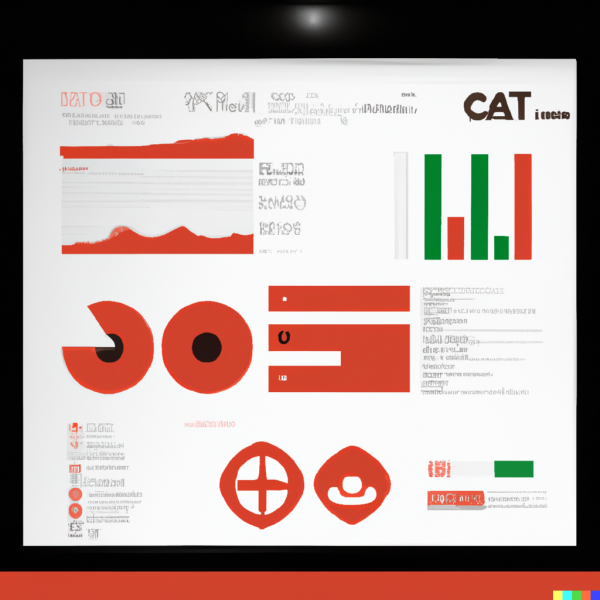The Importance of Real-Time Monitoring in Call Centers
Call centers are an integral part of many businesses, providing a vital link between the company and its customers. To ensure that these centers are operating at their best, it is important to track and monitor a range of key metrics.
Real-time monitoring is especially important as it allows managers to stay up-to-date with the performance of the call center and take immediate action if needed. Some of the key metrics to monitor in a call center include average handle time, first call resolution rate, abandonment rate, and customer satisfaction score.
By tracking these metrics in real time, call centers can improve efficiency, enhance the customer experience, and increase revenue and profitability. In this article, we will discuss the importance of real-time monitoring in call centers, the types of metrics to track, and the tools and best practices for doing so.
Types of Call Center Metrics to Monitor in Real-Time
There are several key metrics that are essential to monitoring in real time in a call center. These metrics can provide valuable insights into the performance of the call center and help managers identify areas for improvement. Here are some of the key metrics to track:
Average Handle Time
This is the average amount of time it takes for a customer service representative to handle a call. It is important to track this metric in real time as it can impact the efficiency and productivity of the call center. A high average handle time can indicate that reps are struggling to resolve customer issues quickly, which can lead to increased wait times and frustrated customers.
First Call Resolution Rate
This is the percentage of calls that are resolved on the first attempt. A high first-call resolution rate is important as it can save time and resources for both the company and the customer. By monitoring this metric in real-time, managers can identify issues that may be causing a low first-call resolution rate and take action to improve it.
Abandonment Rate
This is the percentage of calls that are abandoned before they are answered. A high abandonment rate can indicate that customers are becoming frustrated with long wait times or that there are not enough reps available to handle the volume of calls. Tracking this metric in real time can help managers identify and address any issues that may be causing a high abandonment rate.
Customer Satisfaction Score
This is a measure of how satisfied customers are with the service they receive. Monitoring this metric in real-time can help managers identify any issues that may be causing a low customer satisfaction score and take action to improve it. A high customer satisfaction score is essential for maintaining customer loyalty and building a positive reputation for the company.
Benefits of Real-Time Monitoring
Real-time monitoring of call center metrics can offer a range of benefits for the business. Here are some of the key benefits:
Improved Efficiency and Productivity
By tracking key metrics in real-time, managers can identify any bottlenecks or
inefficiencies in the call center and take action to address them. This can help to improve the overall efficiency and productivity of the call center.
Enhanced Customer Experience
Real-time monitoring can help managers identify and address any issues that may be causing a negative customer experience. By tracking metrics such as average handle time and first call resolution rate, managers can ensure that customers are receiving the help they need in a timely and efficient manner.
Increased Revenue and Profitability
A positive customer experience can lead to increased customer loyalty and higher levels of repeat business. This can, in turn, lead to increased revenue and profitability for the company. Real-time monitoring of call center metrics can help managers identify and address any issues that may be impacting customer satisfaction, leading to increased revenue and profitability in the long term.
Tools for Real-Time Monitoring
There are a range of tools available for real-time monitoring of call center metrics. Here are some options:
Call Center Software With Real-Time Dashboard
Many call center software platforms come with a real-time dashboard that allows managers to track key metrics in real-time. This can include metrics such as average handle time, first call resolution rate, and abandonment rate.
Data Visualization Tools
Data visualization tools such as Tableau or Google Charts can be used to create interactive dashboards that allow managers to track call center metrics in real-time. These tools can be especially useful for displaying complex data in an easily understandable format.
Mobile Apps for on-the-go Monitoring
Mobile apps can be a convenient way for managers to stay up-to-date with call center performance while on the go. Many call center software platforms offer mobile apps that allow managers to track key metrics in real time and receive alerts when thresholds are reached.
Regardless of the tool being used, it is important to ensure that it is user-friendly and provides the necessary data and features for effective real-time monitoring.
Best Practices for Real-Time Monitoring
It's crucial to adhere to a few best practices to get the most out of call center metrics that are monitored in real-time. Here are some ideas to think about:
Set up Alerts and Thresholds
Managers can receive messages when particular thresholds are reached by setting up alerts and thresholds for critical KPIs. For instance, a warning could be activated when the desertion rate surpasses a predetermined threshold. This enables managers to respond quickly to any problems that might be affecting performance.
Data Analysis and Evaluation
Real-time monitoring is only helpful if the data is regularly reviewed and examined. Managers can see trends and patterns that might be affecting performance by routinely examining and evaluating data. This can assist in guiding strategy and decision-making.
Using Data To Guide Decision-Making and Strategy
Real-time monitoring data should be used to guide strategy and decision-making. For instance, management can decide to invest in more training for reps or adopt new technology to speed up operations if the average handling time is regularly high. Managers can improve call center performance by adopting a data-driven strategy by utilizing data to guide decision-making.
Next Steps
A call center's success depends on real-time monitoring. Call centers may increase productivity, enhance the customer experience, and boost revenue and profitability by monitoring important indicators in real-time.
A variety of solutions, such as call center software with real-time dashboards, data visualization tools, and mobile apps, are available for real-time monitoring. Managers may effectively use real-time monitoring to boost call center performance by adhering to best practices like putting up alerts and thresholds, routinely reviewing and evaluating data, and using data to influence decision-making and strategy.
Schedule a demo to learn more about how Xaqt's Real Time Monitoring solutions can impact your call center.
Frequently Asked Questions about Real Time Call Center Monitoring
Q: What are some key metrics to monitor in a call center?
A: Some key metrics to monitor in a call center include average handle time, first call resolution rate, abandonment rate, and customer satisfaction score.
Q: What are the benefits of real-time monitoring in a call center?
A: Real-time monitoring of call center metrics can improve efficiency and productivity, enhance the customer experience, and increase revenue and profitability.
Q: What tools are available for real-time monitoring of call center metrics?
A: Some tools for real-time monitoring of call center metrics include Spectra, Xaqt's data and analytics platform as well as Microsoft Power BI, Tableau and Amazon QuickSite.
Q: What are some best practices for real-time monitoring in a call center?
A: Some best practices for real-time monitoring in a call center include setting up alerts and thresholds, regularly reviewing and analyzing data, and using data to inform decision-making and strategy.
Q: Can real-time monitoring help improve customer satisfaction?
A: Yes, real-time monitoring of call center metrics can help identify and address issues that may be impacting customer satisfaction. By tracking metrics such as average handle time and first call resolution rate, managers can ensure that customers are receiving the help they need in a timely and efficient manner, leading to increased customer satisfaction.




